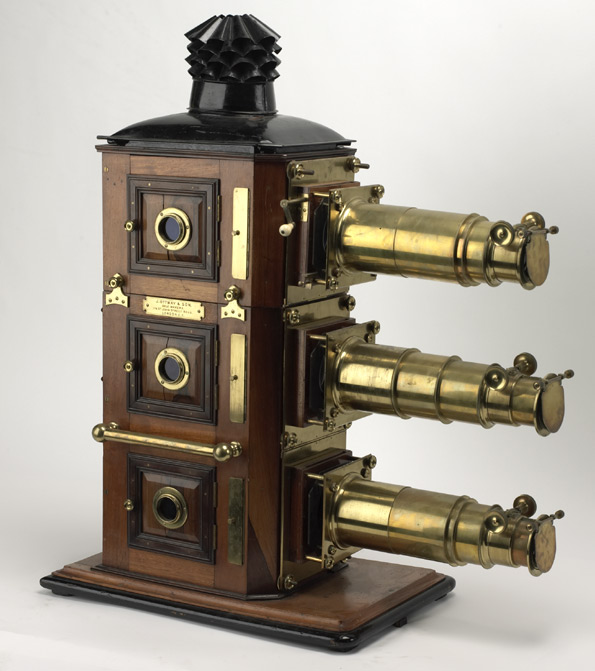 Triunial projector, c1890s
Triunial projector, c1890s
TLF ID R6378
This is a triunial or triple projector, also known as a triple lens magic lantern, probably from the 1890s. The projector is mainly made from varnished wood such as mahogany, and brass. Three lens systems in telescopic tubes project from the box, each covered with a brass lens cap. In front of each tube is a slide gate, used to hold the glass slides on which the images were printed or painted. On the side of the projector are three lamphouse doors, each with a small window.
